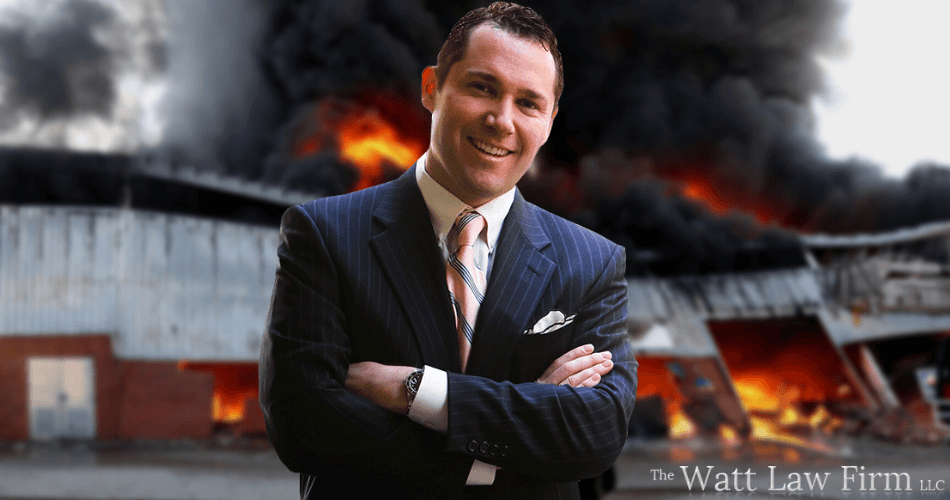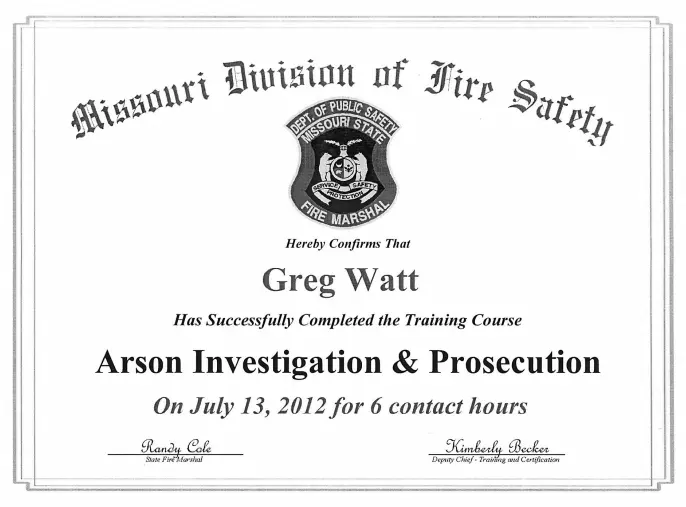
Charged with Arson in Kansas City?
Jump to Section
Arson, in general, is damaging any building, dwelling, or property by means of fire or an explosion. The arson laws in both Kansas and Missouri are lengthy and encompass a wide variety of acts.
By definition, a fire is considered an arson fire when all other accidental caused have been ruled out.
It's very common to see an arson case begin with a lengthy investigation by the bomb and arson squad. The bomb and arson squad has some of the most highly trained and competent investigators assigned to the task of detecting accelerants and other suspicious causes of damage.
The bomb and arson squad consist of seven detectives and one sergeant all cross-trained in cause and origin determination for fire scenes, recognition, renders-safe, and post-blast investigations. The squad accomplishes its mission through hundreds of hours of training, and the use of sophisticated equipment.
The equipment used is provided by the FBI.
If you find yourself being questioned by anyone in the bomb and arson squad, stop what you are doing and call The Watt Law Firm. Protecting yourself demands that you invoke your right to counsel immediately.
Greg Watt is highly experienced in the science and law needed to defend an arson case and your defense could be compromised if you wait too long.
Arson is defined as, the malicious burning of another's house or property, or in some statutes, the burning of one's own house or property, as to collect insurance.
Someone who engages in this behavior is referred to as an arsonist.
According to the FBI in 2017, law enforcement agencies nationwide reported 41,171 arsons. Participating agencies provided expanded offense data regarding 38,764 arsons nationwide.
2018 Missouri Arson arrests statistics provided by Missouri State Highway Patrol.
| Male | Adults | 141 | 61.57% |
| Male | Juveniles | 34 | 14.85% |
| Female | Adults | 46 | 20.09% |
| Female | Juveniles | 8 | 3.49% |
TOTAL Arson arrests of 229.
Arson Law and Consequences
The severity of punishment for arson convictions vary depending on the circumstances. At minimum, arson is a non-person felony in Kansas. Missouri, however, distinguishes “arson” from “burning,” typically based on the type of property that is damaged. “Arson” is always a felony in Missouri, but “burning” may be filed as a misdemeanor.

Arson in Missouri
Missouri distinguishes between “arson” and “burning.” The differences between the two crimes are relatively simple if you keep in mind the type of property that is damaged and the intent of the person committing the act.
Building or Home + Intent to Damage = Arson
To be convicted of arson, a person must knowingly damage a building or inhabitable structure by fire or explosion. Arson is additionally broken down into three degrees:
First-degree arson
Second-degree arson
Third-degree arson
Other Property (i.e. car or fence) + Intent to Damage = Knowingly Burning
“Knowingly burning” is essentially the arson of personal property, other than a building or inhabitable structure. It is a class E felony (up to 4 years imprisonment; up to $10,000 fine).
(Mo. Rev. Stat. § 569.055)
Building or Home + Accidental Damage = Reckless Burning
(Mo. Rev. Stat. § 569.060).
Other Property + Accidental Damage = Negligent Burning
(Mo. Rev. Stat. §§ 569.065)
Arson in Kansas
In Kansas, arson is knowingly damaging, by fire or explosion:
- Another person’s dwelling (Severity Level 6, person felony: minimum 32 months imprisonment).
- A dwelling, with intent to defraud an insurer or lienholder (Severity Level 6, person felony: minimum 32 months imprisonment).
- A non-dwelling of another (Severity Level 7, nonperson felony: minimum 15 months imprisonment).
- A non-dwelling, with intent to defraud an insurer or lienholder (Severity Level 7, nonperson felony: minimum 15 months imprisonment) (Kan. Stat. Ann. §§ 21-5812(a)(1) & (c)(1)).
If a fire or explosion occurs in a dwelling, during the manufacture of a controlled substance, it is considered a Severity Level 7, person felony (minimum 22 months minimum). If the property damaged under these circumstances is not a dwelling, it is a Severity Level 7, nonperson felony (minimum 15 months imprisonment)
(Kan. Stat. Ann. §§ 21-5812(a)(2)-(3) & (c)(1))
Kansas also defines aggravated arson as committing those same acts above when a person is inside or if an emergency responder suffers great bodily harm or disfigurement.
If anyone is harmed, or if there is a substantial risk of bodily harm, it is considered a Severity Level 3, person felony (minimum 89 months imprisonment)
If there is no substantial risk of bodily harm to the person inside, it is a Severity Level 6, person felony (minimum 32 months imprisonment)
(Kan. Stat. Ann. §§ 21-5812(b) & (c)(2))
LEARN ABOUT YOUR LEGAL OPTIONS

